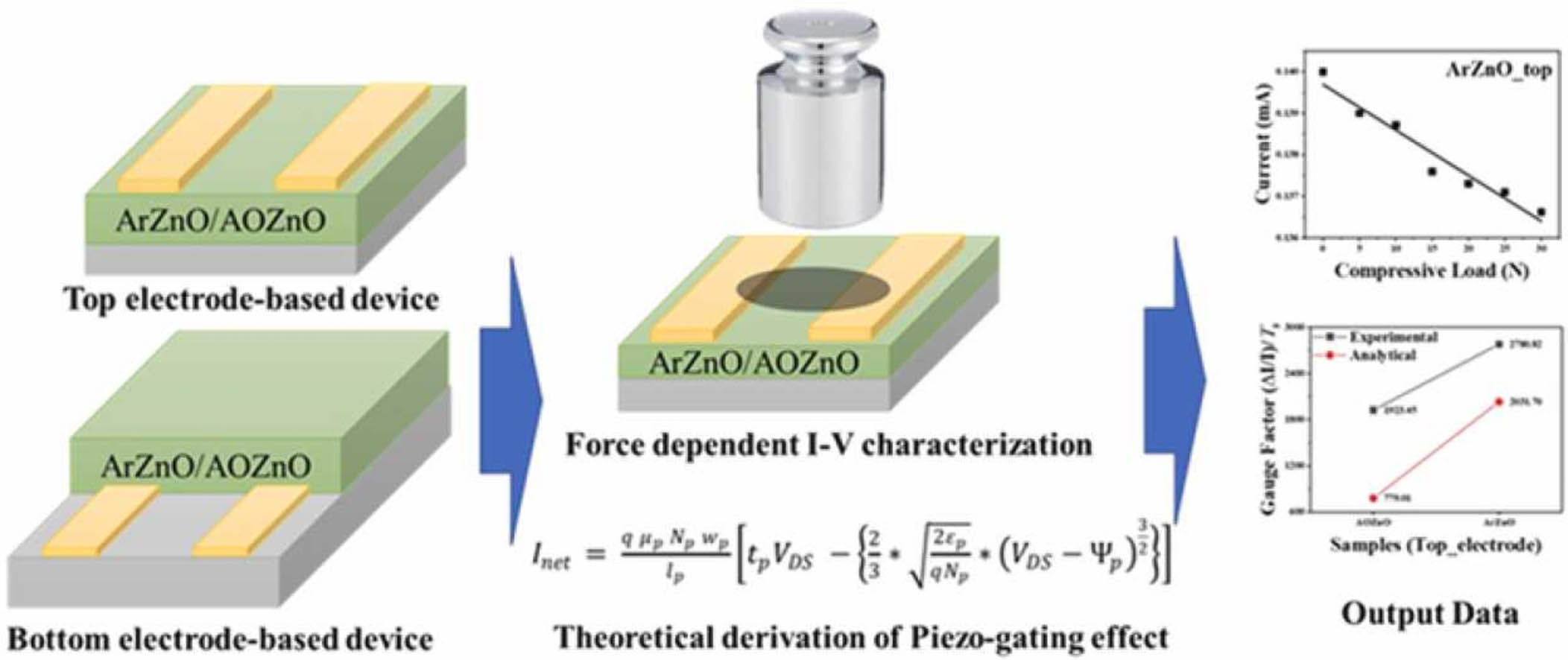Piezoelectrics, or materials that generate electric charge when a strain is applied to them, are becoming extremely useful as compact and energy-efficient force sensors, noted researchers at National Cheng Kung University in Taiwan. They announced last week that they have developed a “dual-mode,” piezo-gated, thin-film transistor, as well as an analytical model explaining its working mechanism.
Not only is piezoelectronics useful for robotics, the Internet of Things, and Industry 4.0, but the technology could also have applications in structural health monitoring in civil engineering and human-machine interfaces, said the scientists.
Piezotronic force sensors are typically governed by either a strain-induced Schottky barrier height (SBH) modulation or by a piezo-gating effect that redistributes the charge carriers in an induced piezoelectric field, said the National Cheng Kung University (NCKU) team.
However, while SBH-based devices have been well-explored, piezo-gating based devices remain relatively less understood. This has limited the fabrication of piezo-gated transistors, the basic building block of all electronics, according to the researchers.
“In addition, the piezo-gating effect is often confused with the 'piezoresistive effect,' a co-existing phenomenon with similar response,” said NCKU. “To harness the full potential of the piezo-gating effect, we, therefore, need to understand it better.”
Piezoelectronic devices to become more sensitive
The NCKU researchers claimed that their piezo-gated thin-film transistor (PGTFT) is the first of its kind in a new study published in Nano Energy. The PGTFT exhibits an unprecedented operation between two modes, namely depletion and accumulation, and a record gauge factor (ratio of relative change in current to mechanical strain) of 2,780, indicating its extreme sensitivity.
“PGTFTs relying solely on the piezo-gating effect are essential for developing advanced piezotronic devices,” said Prof. Chuan-Pu Liu, the corresponding author of the study. “But most PGTFTs reported so far show indistinct piezo-gating effect through SBH modulation induced by piezoelectric fields, and [they] can detect only one-dimensional strain.”
In their work, the researchers used zinc oxide (ZnO) to fabricate the thin-film transistors (TFTs) because of the versatile piezoelectric and semiconductor properties of ZnO. The charge carrier concentrations in the ZnO thin films were varied in a controlled manner by changing the gas used during their preparation. The thin films were then fully characterized and used to prepare two distinct PGTFT configurations.
The team tested the current-voltage characteristics of the PGTFTs by subjecting them to strain and analyzed the results both analytically and using numerical simulations. It also explored the effect of changing carrier concentrations on the operation modes of the PGTFTs to gauge the influence of the piezo-gating effect.

PGTFT reveals piezo-gating dominance
The NCKU team found that increased strains reduced the current in the top PGTFT electrode but increased it in the bottom electrode. This happened due to the electrons moving from the top to the bottom in response to the force, creating a depletion at the top and an accumulation of electrons at the bottom.
This, in turn, affected the output current and revealed the co-existence of piezo-gating effect and piezoresistive effect, with the piezo-gating effect being dominant. The team also showed, both experimentally and analytically, that the gauge factor is highly sensitive to the carrier concentration, showing a 44% enhancement in their design.
“Our proposed analytical model explains the workings of the PGTFT perfectly, showing agreement with experiment as well as simulations,” said Prof. Liu.
NCKU said these findings will pave the way for the development and application of multi-dimension strain-sensing PGTFTs that could lead to novel human-machine interfaces that are compact, cost-effective, and less power-hungry.
Article topics
Email Sign Up
















